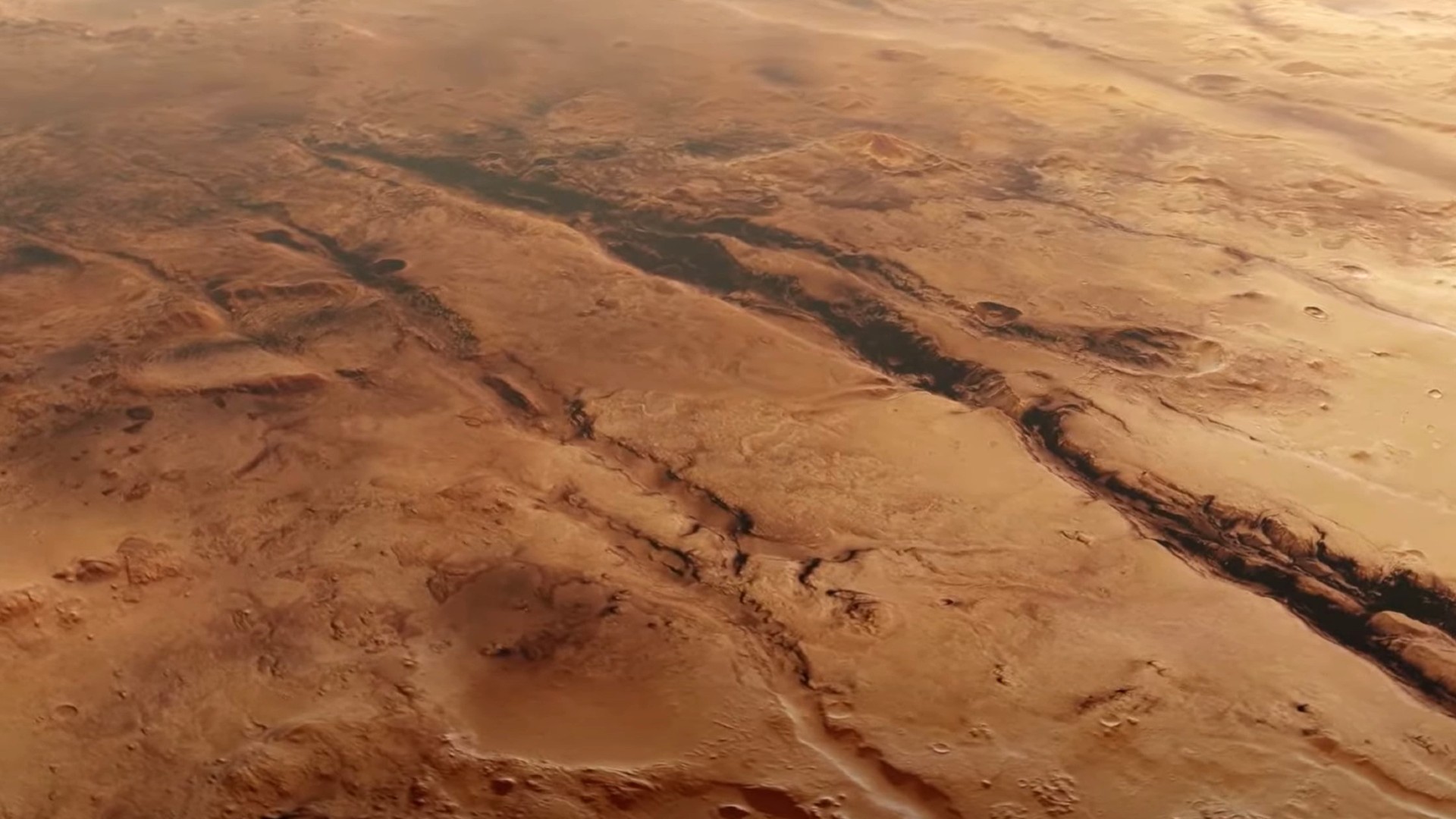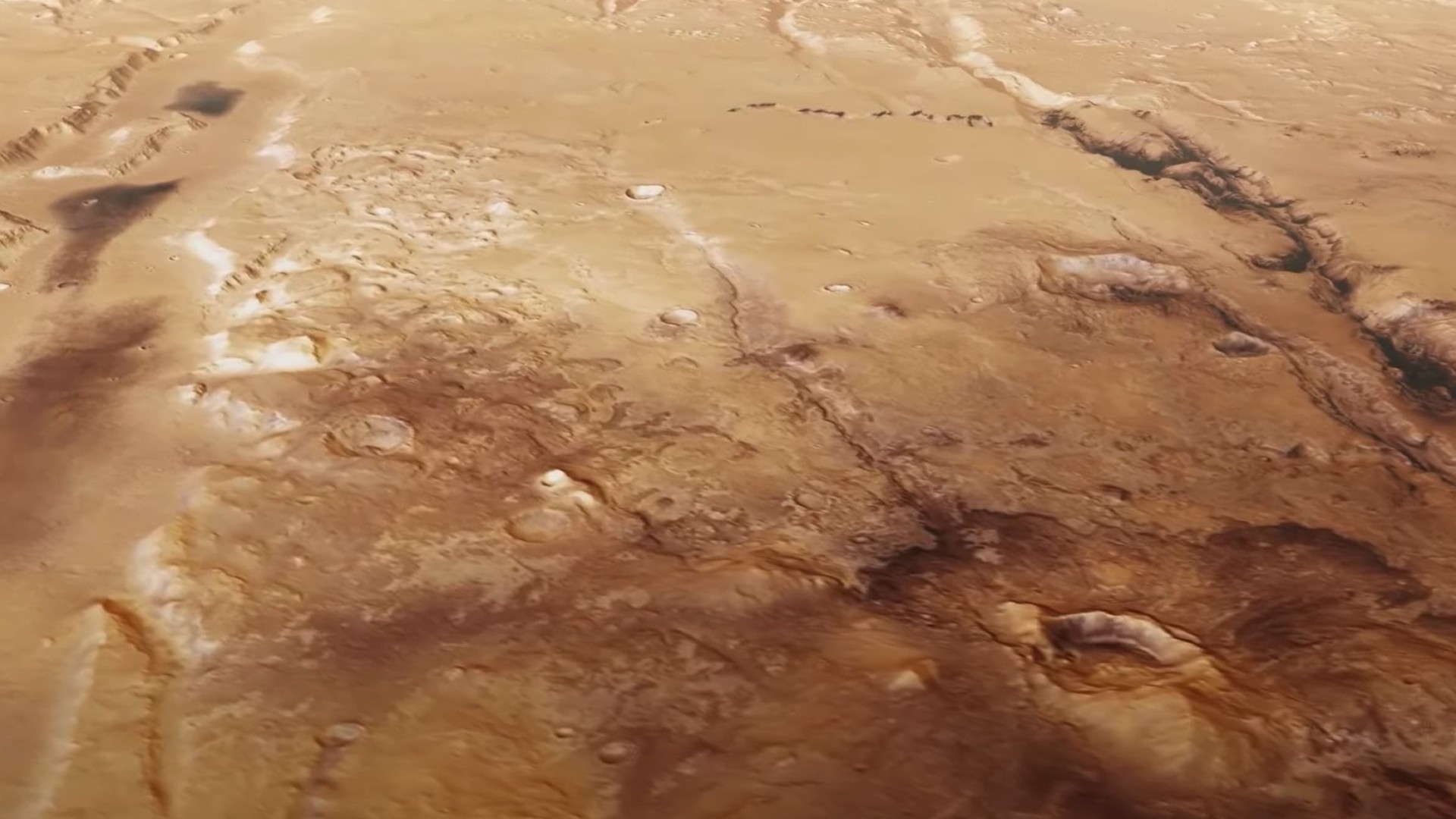
The strikingly diverse surface of Mars is captured in new orbiter flyover footage, providing insight on the events of the Red Planet's ancient past.
The European Space Agency's (ESA) Mars Express orbiter surveyed Mars' Nili Fossae trenches, located along the eastern edge of a massive impact crater named Isidis Planitia. These trenches are hundreds of meters deep and several hundred kilometers long, and are accompanied by features called graben, which form when the ground between two parallel trenches fractures and falls away.
The trenches of Nili Fossae are believed to have formed following a colossal meteorite impact some 4 billion years ago. Following the impact, which created the 1,200-mile-wide (1,900-kilometer-wide) Isidis Planitia crater, areas of the Martian surface would have cracked and crumbled, forming the trenches seen by the orbiter today. Similar features, called Amenthes Fossae, can be found on the other side of the crater, too, according to ESA.
Related: A massive, icy Mars crater stares up at a Red Planet orbiter (image)

"Scientists have focused on Nili Fossae in recent years due to the impressive amount and diversity of minerals found in this area, including silicates, carbonates, and clays — many of which were discovered by Mars Express' OMEGA instrument," ESA officials said in the description of the orbiter's recent video on YouTube. "These minerals form in the presence of water, indicating that this region was very wet in ancient Martian history."
Created using data from the Mars Express High Resolution Stereo Camera (HRSC), the new video depicts the fractured, uneven appearance of the Nili Fossae trenches, along with a bird's eye view of the nearby Jezero Crater, where NASA's Perseverance rover landed in 2021 to search for signs of life that may have once inhabited the ancient lake that filled the crater.

"Much of the ground here formed over 3.5 billion years ago, when surface water was abundant across Mars," ESA officials wrote in the video's description. "Scientists believe that water flowed not only across the surface here but also beneath it, forming underground hydrothermal flows that were heated by ancient volcanoes."
The Mars Express orbiter, which arrived at the Red Planet in 2003, studied Nili Fossae previously in 2014. Researchers used images captured by the orbiter, along with digital terrain models of Mars to create the 3D rendering of the landscape used for the flyover video.
This data not only aids in our understanding of Mars' past, but also helps inform scientists on where to land exploratory spacecraft in the future.







